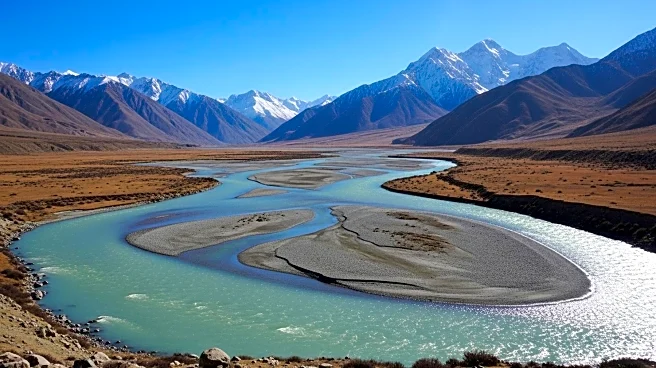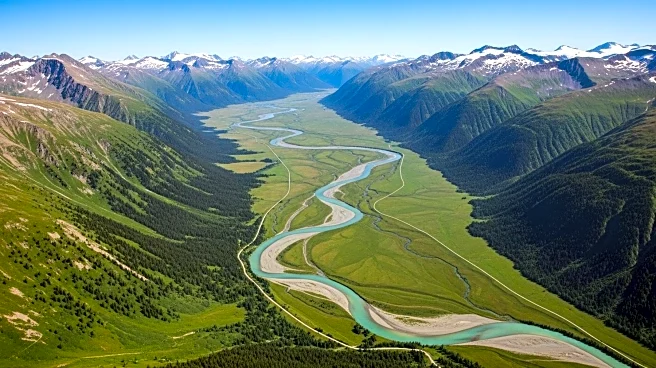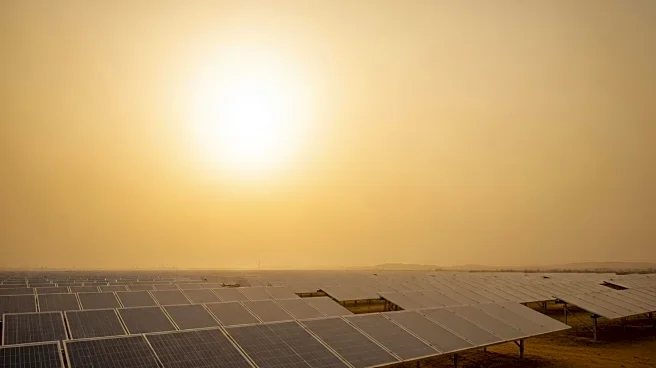What's Happening?
The Yarlung Zangbo River, the highest major river on Earth, is experiencing increasing instability due to climate change, according to NASA's Earth Observatory. This river, which originates from a glacier in the eastern Tibetan Plateau, stretches approximately 1,250 miles and flows into India, becoming part of the Brahmaputra River. The river's braided nature, characterized by multiple channels that frequently change shape, is attributed to heavy sediment deposits from the Himalayas. These deposits contribute to the river's dynamic shifts, preventing vegetation from establishing on its sandbars. The instability is exacerbated by climate change, which has led to significant water loss from the Angsi Glacier, increasing sediment deposits and erosion risks.
Why It's Important?
The instability of the Yarlung Zangbo River poses risks to local ecosystems, infrastructure, and landscape stability. As climate change continues to affect Himalayan glaciers, increased sediment deposits could lead to more frequent erosion and potential collapse of riverbanks. This has implications for the communities and biodiversity dependent on the river, as well as for regional water management strategies. The river's changes could also impact the broader hydrological systems in the region, affecting water availability and quality downstream in India and Bangladesh.
What's Next?
Further monitoring and research are needed to understand the long-term impacts of climate change on the Yarlung Zangbo River. Scientists may focus on developing strategies to mitigate erosion and protect local ecosystems. Additionally, international cooperation may be necessary to address the transboundary water management challenges posed by the river's instability, particularly as it affects countries like India and Bangladesh.
Beyond the Headlines
The Yarlung Zangbo River's instability highlights the broader challenges of climate change in high-altitude regions. The river's dynamic nature serves as a case study for understanding how climate-induced changes in glacial meltwater can affect river systems globally. This situation underscores the need for comprehensive climate adaptation strategies that consider the unique environmental and cultural contexts of affected regions.












